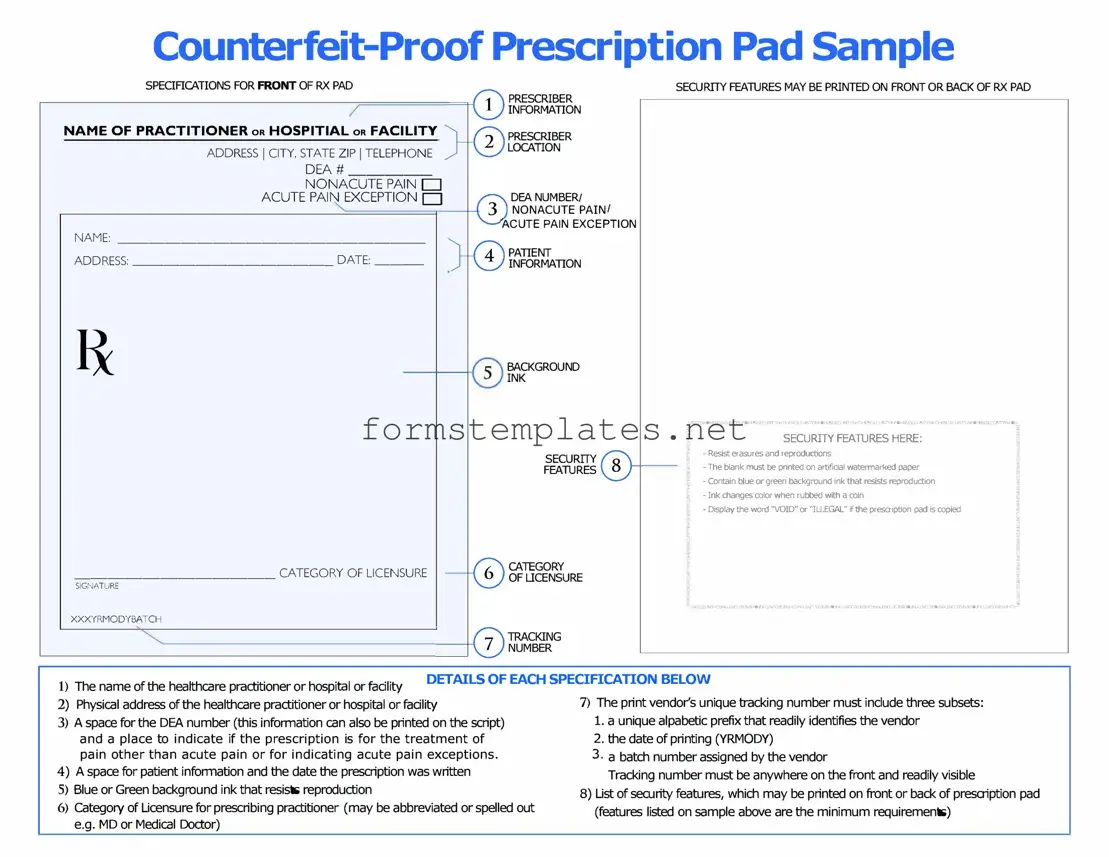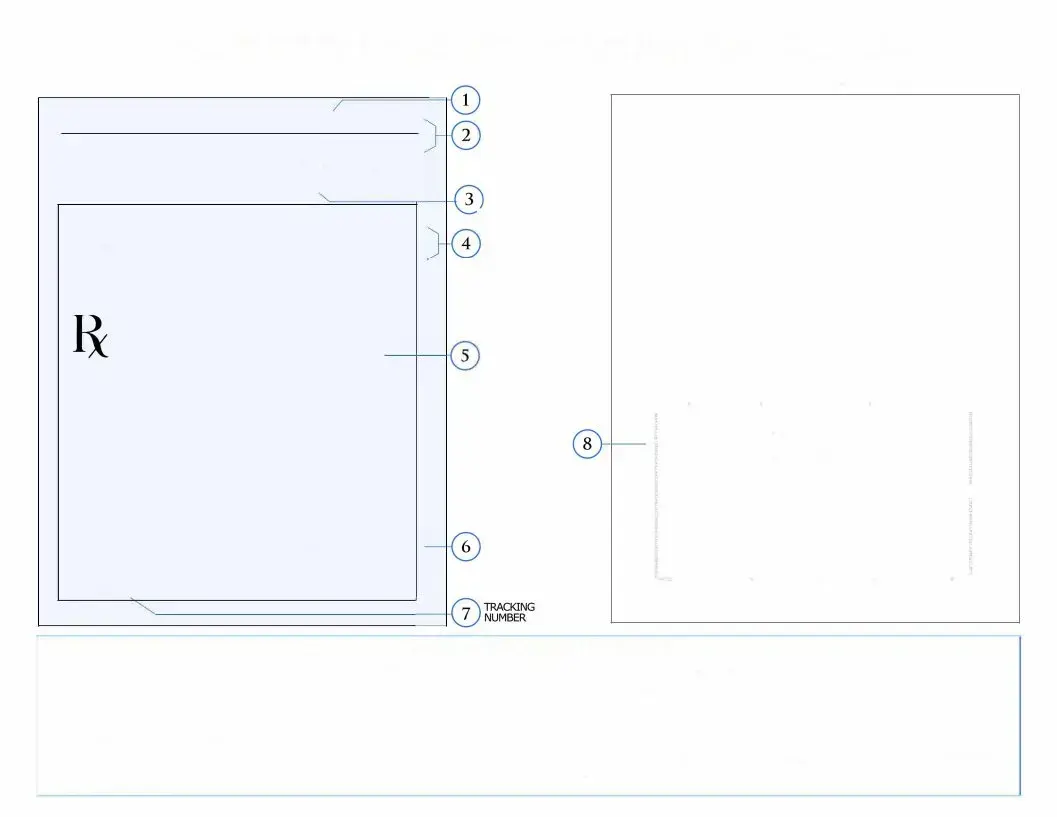The Prescription Pad form plays a crucial role in the healthcare system, serving as a formal document that allows healthcare providers to prescribe medications to patients. This form typically includes essential details such as the patient's name, date of birth, and contact information, ensuring that prescriptions are accurately matched to the correct individual. Furthermore, it contains the prescribing physician's information, including their name, contact number, and medical license number, which helps to authenticate the prescription. The medication section outlines the drug name, dosage, quantity, and administration instructions, providing clear guidance to both the patient and the pharmacist. Additionally, the form may include refill information and any special instructions necessary for the patient's treatment. By standardizing the prescription process, the Prescription Pad form enhances patient safety and streamlines communication among healthcare providers, patients, and pharmacies.

